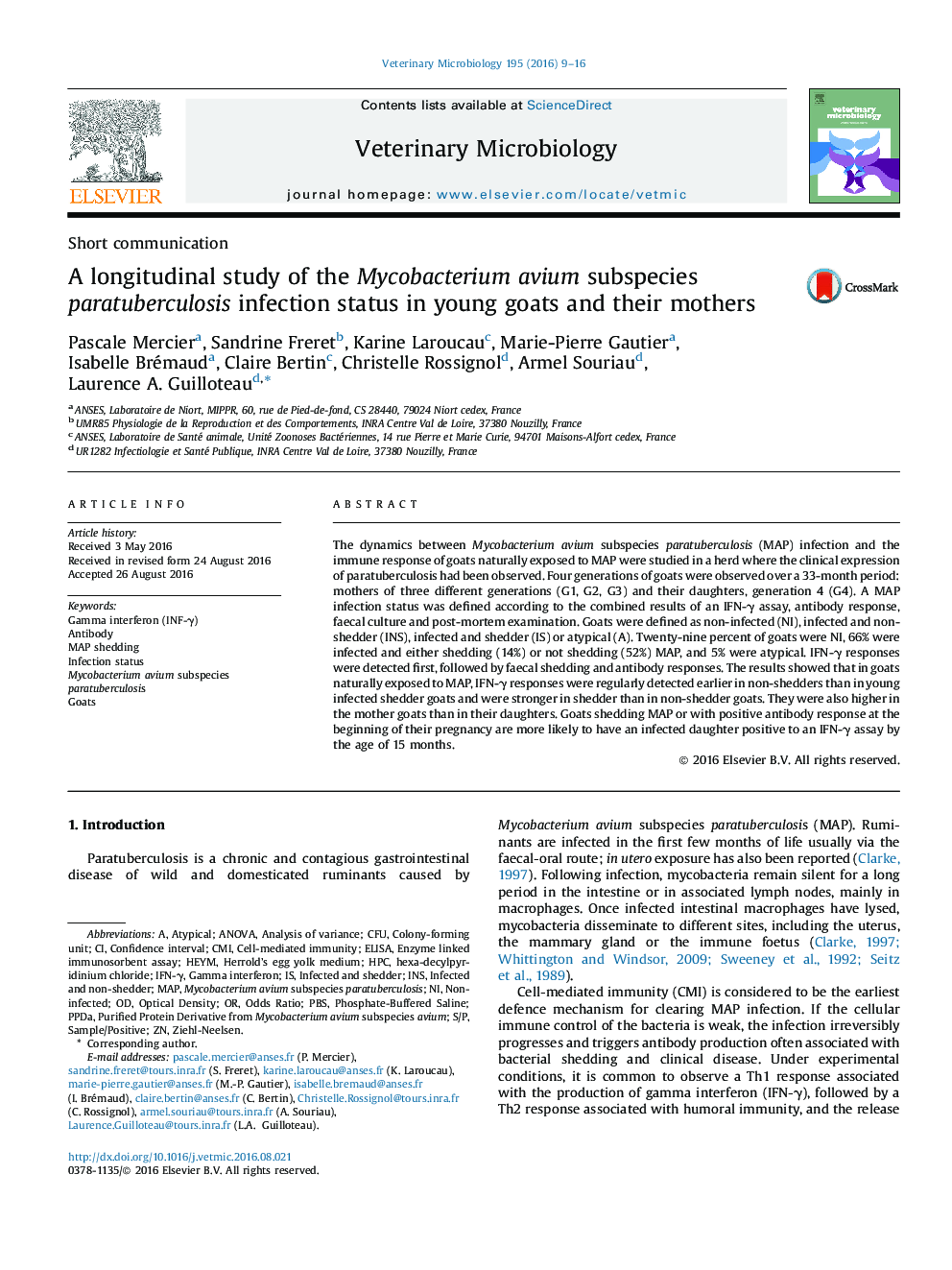| Article ID | Journal | Published Year | Pages | File Type |
|---|---|---|---|---|
| 2466371 | Veterinary Microbiology | 2016 | 8 Pages |
•The IFN-γ response to MAP was the first immune response detected in young goats.•The IFN-γ response was regularly detected earlier in non-shedder than in young infected shedder goats.•Pregnancy had an impact on MAP infection status in goats and their daughters.
The dynamics between Mycobacterium avium subspecies paratuberculosis (MAP) infection and the immune response of goats naturally exposed to MAP were studied in a herd where the clinical expression of paratuberculosis had been observed. Four generations of goats were observed over a 33-month period: mothers of three different generations (G1, G2, G3) and their daughters, generation 4 (G4). A MAP infection status was defined according to the combined results of an IFN-γ assay, antibody response, faecal culture and post-mortem examination. Goats were defined as non-infected (NI), infected and non-shedder (INS), infected and shedder (IS) or atypical (A). Twenty-nine percent of goats were NI, 66% were infected and either shedding (14%) or not shedding (52%) MAP, and 5% were atypical. IFN-γ responses were detected first, followed by faecal shedding and antibody responses. The results showed that in goats naturally exposed to MAP, IFN-γ responses were regularly detected earlier in non-shedders than in young infected shedder goats and were stronger in shedder than in non-shedder goats. They were also higher in the mother goats than in their daughters. Goats shedding MAP or with positive antibody response at the beginning of their pregnancy are more likely to have an infected daughter positive to an IFN-γ assay by the age of 15 months.
